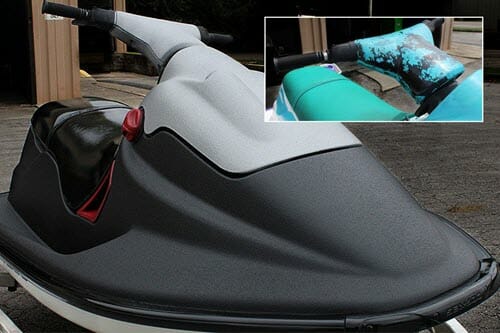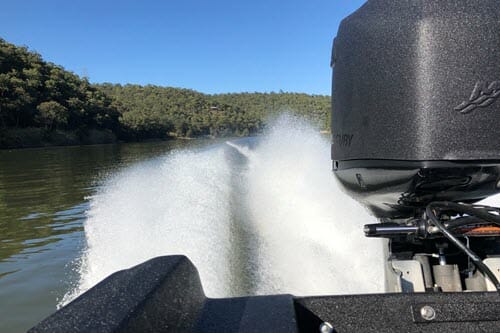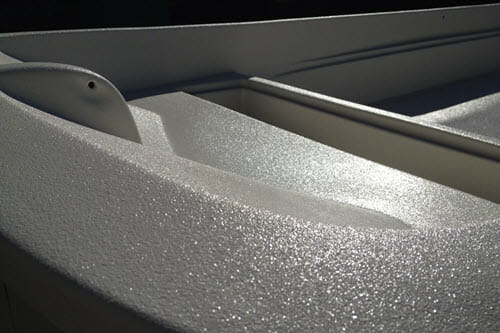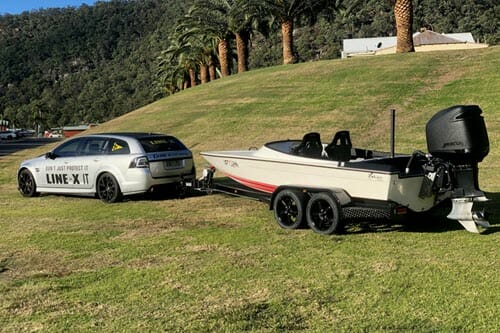
Find your nearest LINE-X Store.
View Service Information for Protective Coatings
Read more Articles on Protective Coatings
Owning a boat, jet ski, or yacht is a serious investment, so owners would want to protect and ensure its longevity and functionality. Owners are usually happy to show off their shiny stainless steel possessions signifying not only the pride of ownership but also the care and work that goes into keeping everything sparkling, protected, and always seemingly new.
Everything – from mast shrouds and winches, throttle and handlebars, to cleats and fishing rod holders – serves an important function, while also adding to the magnificence of a marine vessel. And all of this falls on the owners to ensure their proper maintenance and care.
However, boat, jet ski, and yacht charterers have an even bigger vested interest in caring for their onboard stainless steel equipment. Regular use of these vessels in a saltwater environment requires owners to know how to properly maintain stainless steel fixtures. Although stainless steel is generally low-maintenance, constant exposure to adverse conditions can wear it down.
This is why boat corrosion protection is critical in their upkeep.
Before talking about the best barrier coat for boats and other types of sea-bound vessels, let’s cover a bit of background information on stainless steel and how it is used on boats and yachts.
Boat, Yacht & Jet Ski Metal
Technological innovation, particularly in the field of materials engineering, has given manufacturers access to new and improved materials designed for different applications. In the boatbuilding field, there are various fixtures, fittings, and other equipment used and assembled together which work to create an environment where users can have a pleasurable boating experience.
When it comes to metals used on sea vessels, there are certain configurations necessary to ensure all tools and equipment work without any technical interferences brought on by metal components and magnets.
On boats, for example, stereo and VHF marine radio speakers contain magnets, which can, in turn, affect the shipboard compass. Compasses themselves also have magnets, so having equipment with magnets installed near the compass can lead to erroneous readings by as much as five degrees. The same can be said for cell phones and other electronic equipment that can interfere with compass headings, as well as GPS devices.
Read on for an understanding of how metals, electrolysis, cathodic protection, and marine electronics work together in making the use of your boat or yacht safe and trouble-free. You’ll also understand why boat deck coatings and other types of protective coatings are critical to the functionality and longevity of all types of watercraft.

Electrolysis and Corrosion
When two unlike metals – such as aluminium and stainless steel, or copper and stainless steel – come into contact in a saltwater environment, the salty air or the chloride in saltwater creates an electrical charge. This electrical charge needs to be controlled, or it will lead to corrosion in the lesser (or less noble) metal, which would be aluminium and copper in this case.
To inhibit galvanic corrosion, which can seriously damage your marine vessel, cathodic protection is employed. This technique involves the attachment of a sacrificial anode – usually a material with a more negative electrode potential (e.g. zinc or magnesium) – which protects the metals from corrosion by bearing the brunt of the formed electrical charge. This is why checking and replacing anodes regularly is essential to efficient marine vessel maintenance.

Stainless Steel on Marine Vessels
Marine-grade stainless steel contains molybdenum, nickel, and nitrogen in certain amounts and 10 per cent chromium as this combination is well-suited for use in harsh marine environments, particularly salt water. Stainless steel is built to resist corrosion or pitting and can maintain its strength even at high temperatures.
It also looks attractive and is easy to maintain.
But while stainless steel is made to resist corrosion, it is not corrosion-proof. After exposure to a lot of moisture and harsh air conditions (e.g. saltwater and tropical climates), it will oxidise or corrode. Stainless steel corrosion can occur in freshwater environments as well, although at a much slower rate.
Different types of corrosion impact stainless steel used on boats.
- Atmospheric: This type of corrosion happens when stainless steel is exposed to dirt, sea spray, salt, or rain in the air or carried by the wind.
- Contact: Sometimes, small or microscopic pieces of copper, carbon steel, scale or other foreign bodies get stuck in stainless steel fittings, leading to pitting.
- Chemical: When stainless steel gets in contact directly with corrosive materials like bleach or anything with high chloride content, chemical corrosion occurs.
One of the best ways to reduce the chance of corrosion and impact on your stainless steel parts and accessories is to apply a Polyurea LINE-X coating.

Advanced Protection on Your Boat, Jet Ski or Yacht
For boat hull protection, and to protect stainless steel and other onboard metal fittings in various vessels, implement the following care and maintenance tips:
- When cleaning stainless steel fixtures, always use soft, non-abrasive wiping cloth (e.g. Chamois) Or sponge, plus freshwater and a mild cleaner (e.g. Dishwashing liquid). You can also use the same cleaning materials to remove pitting.
- To get rid of steel stains, you can try using warm water and mild detergent. If this mixture doesn’t work, you can make a paste of baking soda and warm water. For more persistent stains, add some vinegar to the paste and rub on the stain vigorously.
- If you want to use a rust inhibitor on stainless steel, you can use naval jelly or phosphoric acid, which is a mineral-based, inorganic compound. You can also use it to remove rust.
- Regularly hose down the deck and all stainless steel components (Plus using some robust norwegian steam) With fresh water to greatly reduce corrosion potential, particularly after a period of use or exposure to saltwater.
- Damaged stainless steel equipment, fittings, and fixtures should be cleaned and immediately repaired.

And to add a layer of protection, you can also make use of polyurea coatings, the superior option to boat coat epoxy resins.
LINE-X is a world-leading, high-performance protective coating that provides UV protection and prevents corrosion, rust, and leaks in all types of watercraft and sea vessels. It doesn’t fade nor discolour. It is watertight, slip-resistant, durable, and low-maintenance, so you can use your boat, jet ski, or yacht worry-free.
Speak to LINE-X Australia today to organise a quote for protective coating of your boat hull, metal or accessories.

